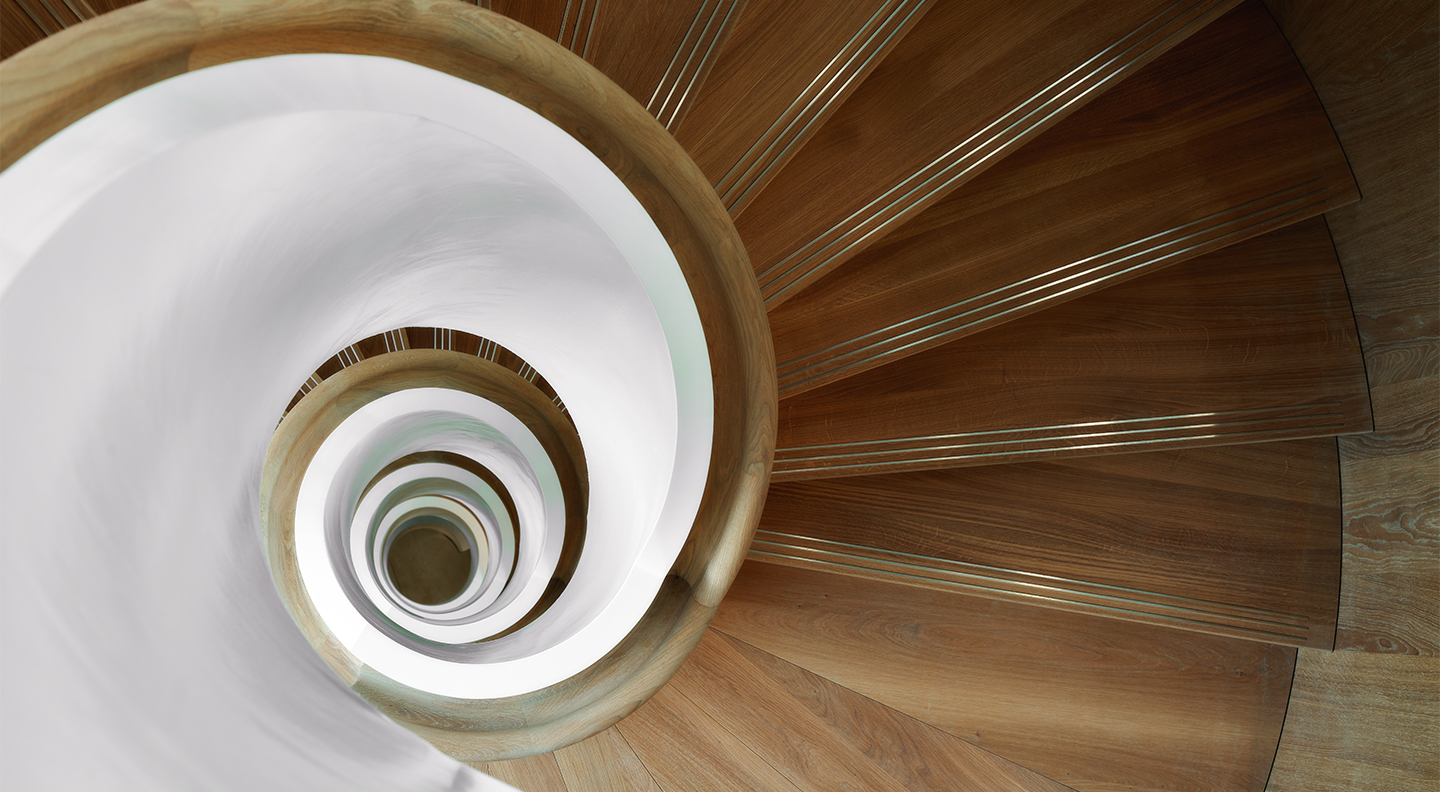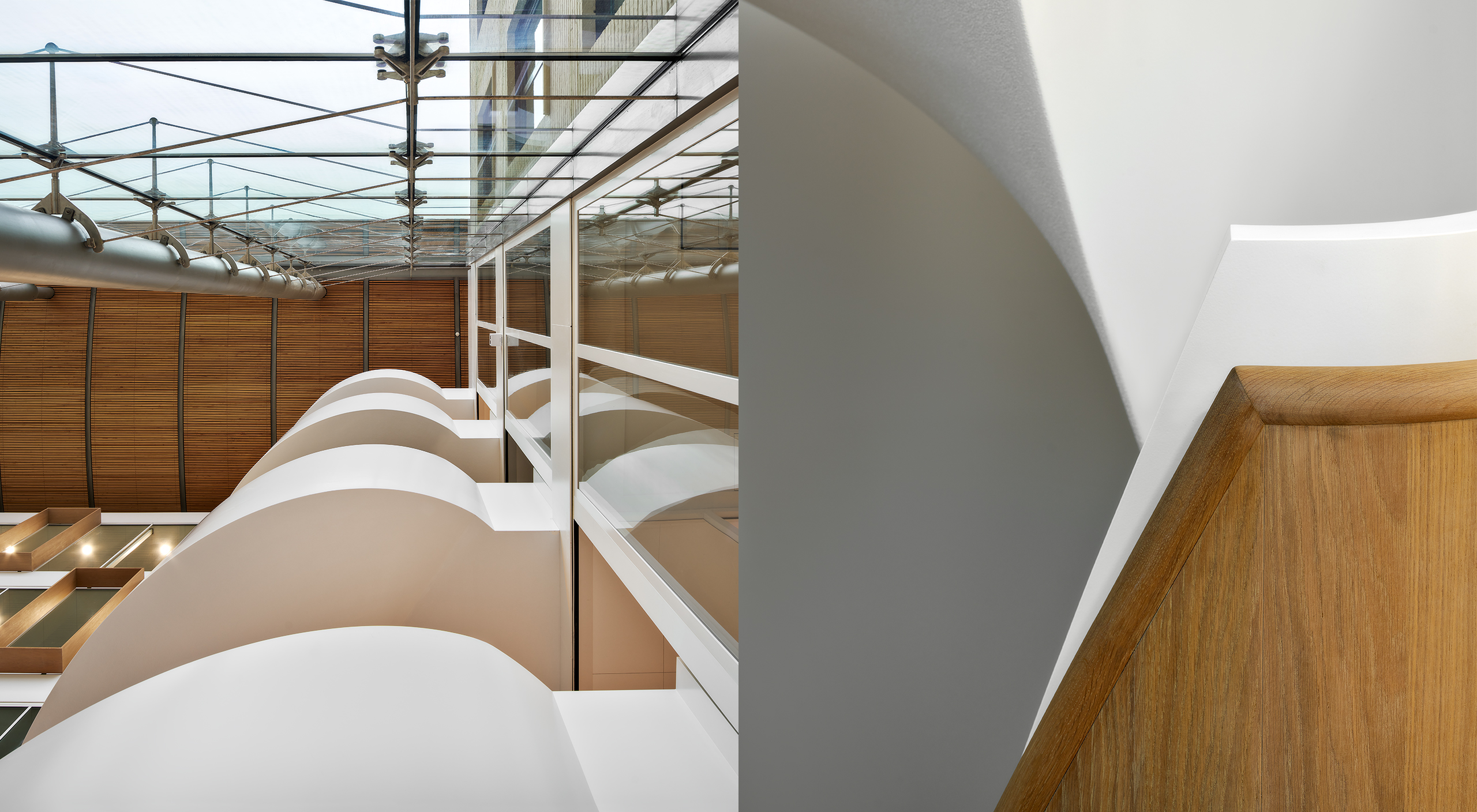

What goes around, comes around: the magic of spiral staircases
Every time we make a spiral staircase we strive for perfection. Perfect geometry. Perfectly smooth soffit. Absolutely precise details. All made possible by 21st century engineering and hand-crafted finishes.
We hope these qualities are obvious in our spiral stairs, such as the three-storey spiral at One Bank Street, London, the four-storey staircase at the 18th century Bentinckhaus in The Hague, and the super-elegant spiral in an office in the historic Rue de Tilsitt near the Arc de Triomphe, Paris.
But however modern and cutting-edge they are, we know that history has beaten us to it – and we’re happy about it!

Some translations of the Old Testament tell us that the Temple of Solomon had ‘winding stairs’ – a spiral staircase, in other words. And this means that stairs based on circular geometry may have been with us for at least 3000 years. What we do know for certain is that the oldest existing spiral staircase, with 135 steps, is inside Trajan’s Column in Rome, built in 113 AD.
The key to spiral stairs is, of course, the circle. Is there a more perfect geometric form than a circle, especially in architecture and art?
Think of the circular dome and oculus at the ancient Pantheon in Rome. Or Wassily Kandinsky’s circle paintings. Or the circular proportions in Leonardo da Vinci’s drawing, ‘Vitruvian Man’. Or the huge circular openings in the concrete walls of the Phillips Exeter Academy Library in America, designed by one of architecture’s greats, Louis Kahn.
Spiral staircases became common in the medieval period when they were built into the walls of cathedrals for the private use of the clergy. But by the 16th century, ‘statement staircases’ appeared, and were meant to be impressive and eye-catching to demonstrate the power and influence of religions, wealthy families, and cities.
Think of the extraordinary three-part staircase at the Laurentian Library in Florence, based on sketches by Michelangelo: the middle flight with curved steps, and two straight-stepped staircases on either side.

Even more astonishing are historic spiral staircases such as the double-helix staircase at the Chateau de Chambord, France; Christopher Wren’s Dean’s Staircase at St Paul’s Cathedral, London; and Inigo Jones’ Tulip spiral staircase at the Queen’s House in Greenwich. These were Wow Factor stairs five centuries before that phrase was born.
By the 1930s, spiral stairs – such as the beautifully streamlined Art Deco stairs at the De La Warr Pavilion in Bexhill, England – became associated with the most daring modern architecture.
And by the mid-1950s, spiral stairs showed how geometry and construction technology could produce amazing staircases, such as the spiral stairs at the General Motors Technical Center in Michigan, designed by Eero Saarinen. And how about Frank Lloyd Wright’s 1959 Guggenheim Museum in New York – basically, a giant spiral ramp 400m long.
And by this time, some spiral staircases were more than amazing – they were truly beautiful. And one of the most beautiful spiral staircases of all time was designed in the 1960s by the legendary Brazilian architect, Oscar Niemeyer. His stunning staircase in the Itamaraty Palace in Brasilia had no central support, no balustrades. Just wide steps rising in a breathtakingly exquisite curve.
We’ve made and co-designed many spiral feature stairs, but we don’t mind coming second to a genius like Niemeyer! We’re just glad to be part of the history of this superbly sensual stair form.